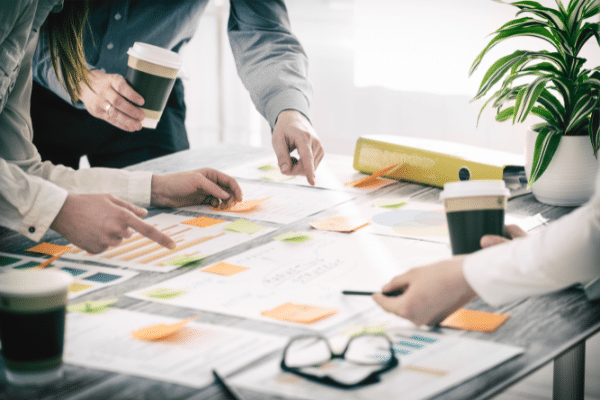Designing products that deliver the value the customer is looking for is essential in any research and development project. Design research allows the design team to focus on the right research methods for the product in question and ensure success. In this article we explain what design research is, the different types that exist and the advantages it offers.
What is Design Research?
Design research refers to the general strategy that will be chosen to integrate the different components of a research or study in a coherent and logical manner, thus ensuring an effective approach to the problem. In other words, it constitutes the plan for the collection, measurement and analysis of data, taking into account that it is the problem that determines the type of research to be used and not the other way around.
On the other hand, design research helps us to know the user in depth, providing us with the qualitative and quantitative information we need through tools such as empathy mapping, interviews, etc., to develop product design from a multidisciplinary approach. So this research method, which consists of user-centered analysis, is able to solve the following questions:
- Who is our user?
- What problems or needs does he/she have?
- How does he/she currently deal with these problems or needs?
- What will the new product provide?
However, in order to arrive at an authentic and accurate result capable of embodying the corporate identity, the types of research design must follow a strategic methodology in line with the type of design research chosen.
Types of design research
There are different types of design research, which are as follows:
1. descriptive design research
This is a research-based design method that is developed through theory established by collecting, analyzing and presenting the data collected. The focus is on describing the situation, problem or case under study and thus providing information on why and how.
2. Exploratory design research
As the word implies, it explores. That is, it consists of an inquiry by answering the question what or how.
3. Explanatory design research
Explains unexplored aspects of a topic and details the what, how and why of the research questions. In other words, explanatory design uses ideas to deepen theories.
4. Evaluative design research
This method helps to better understand the factors that create problematic situations. The aim is, therefore, to evaluate the underlying cause of a specific issue or phenomenon. This process consists of 3 parts: problem identification, diagnosis and solution.
5. Experimental design research
Experimental research establishes a relationship between the cause and effect of a given situation. It is a very practical research method, since it helps to solve a specific problem. It consists of manipulating the independent variables to control the change it has on the dependent variable.
Generally speaking, the types of research-based design are viewed from two perspectives: quantitative or qualitative design research. Both can be used or applied either independently or together.
While quantitative research design is used to examine the relationship between variables, using numbers and statistics to explain and analyze its findings, qualitative design research is exploratory in nature as it seeks to explore rather than predict the outcome, answering the questions of what and how. That is, a qualitative design is used to explore the meaning and understanding of complex social environments, such as the nature of people’s experience, using case studies.
Benefits of design research
Here are some of the main benefits of research-based design:
- Designs based on facts, not assumptions.
- Provides practical knowledge about who our users are.
- Enables analysis of products and brand designs with sustainability values.
- Provides real and consistent data on which to base designs.
- Allows prioritization of functionalities during the creation process.
- Promotes empathy with users by knowing in depth what their needs are.
- Allows the development of products of value for the user.
Do you want to develop a product that fulfills all these functions? Contact our strategic design and prototyping team and tell us about your case.

